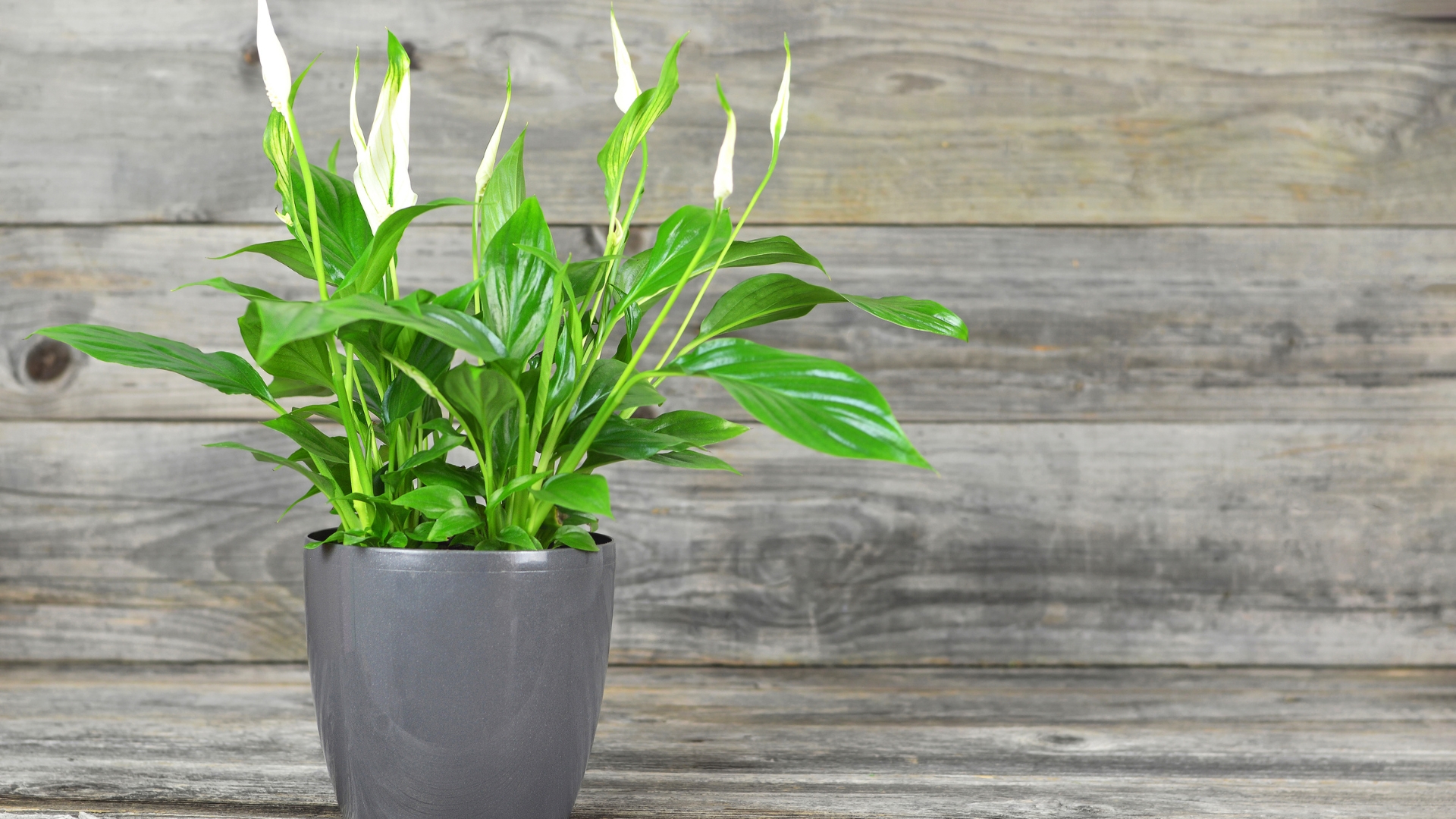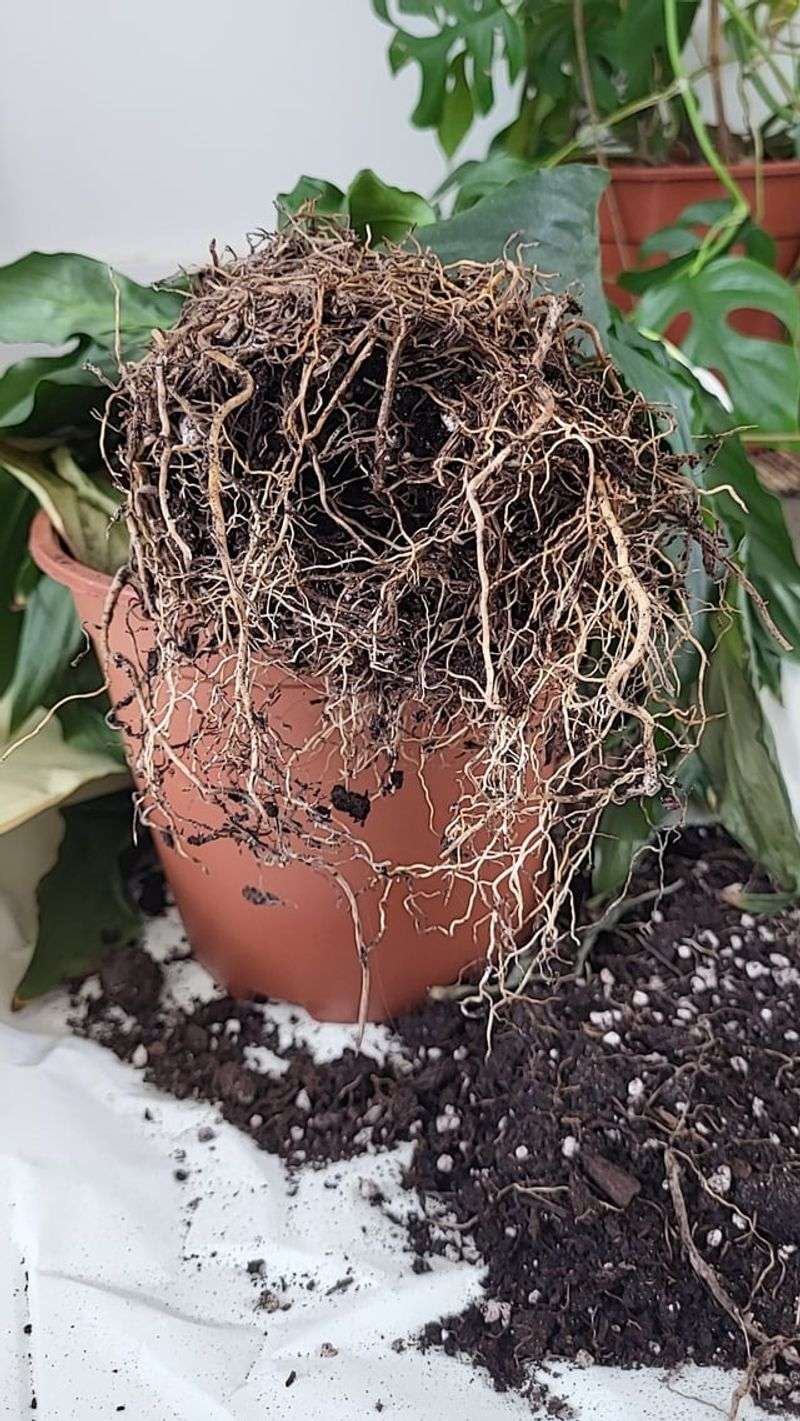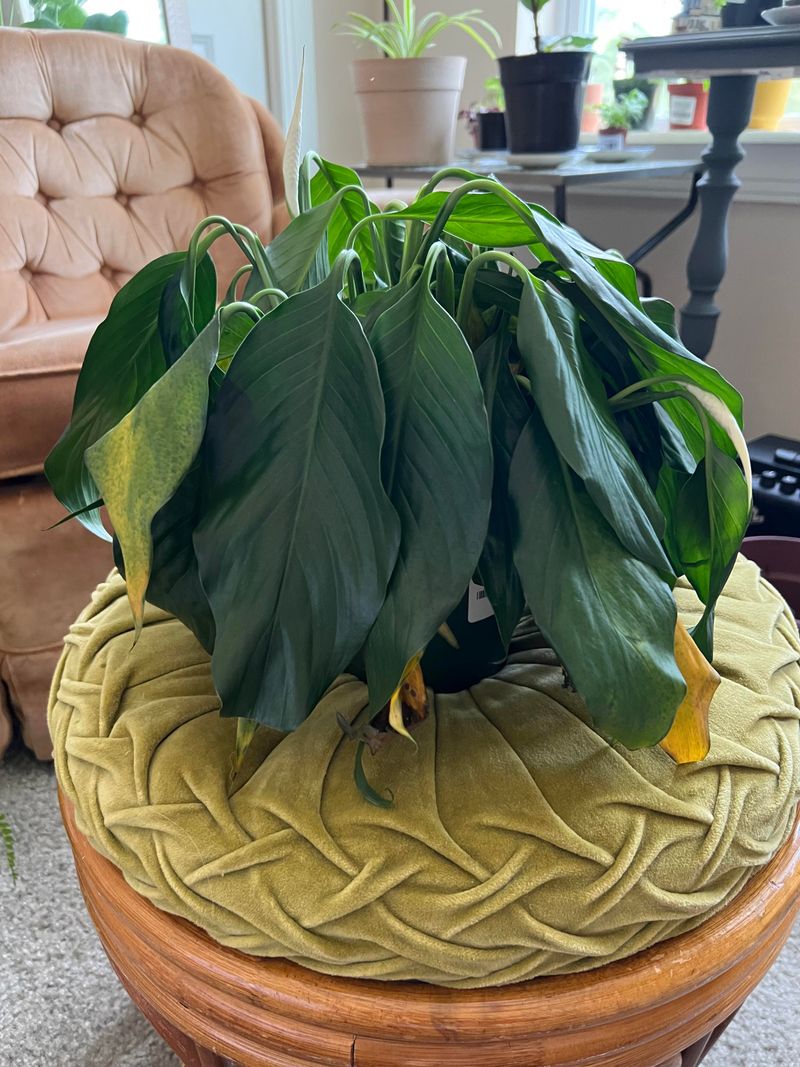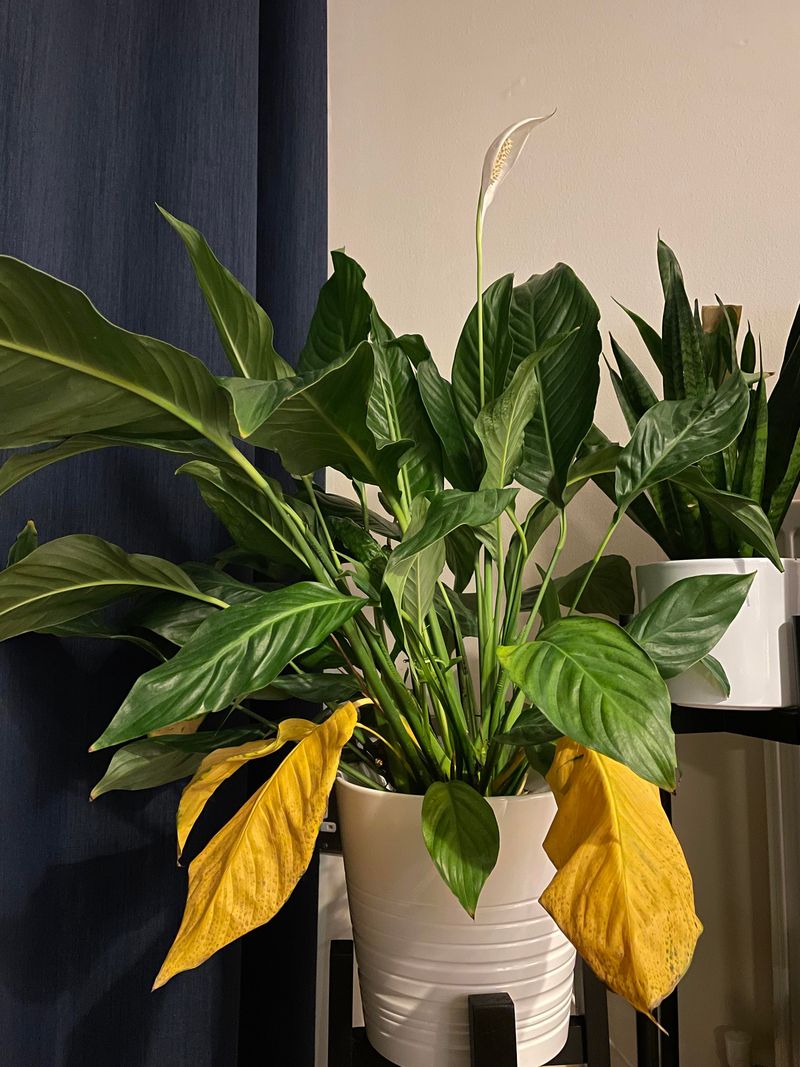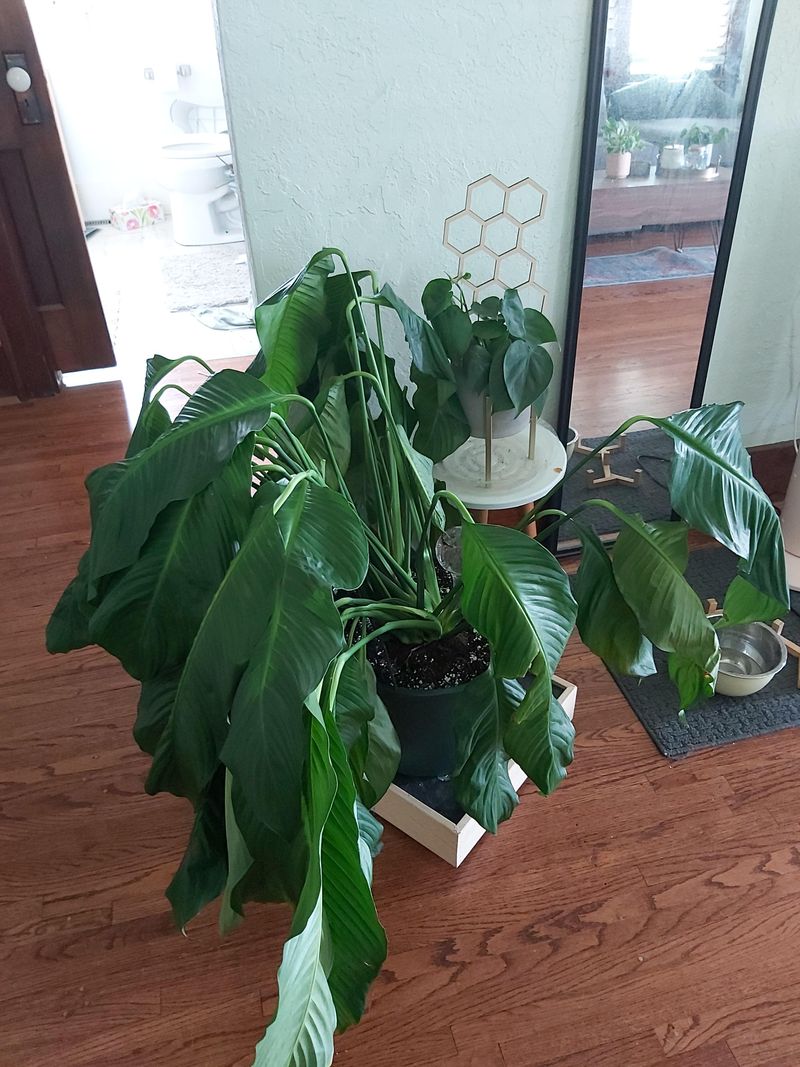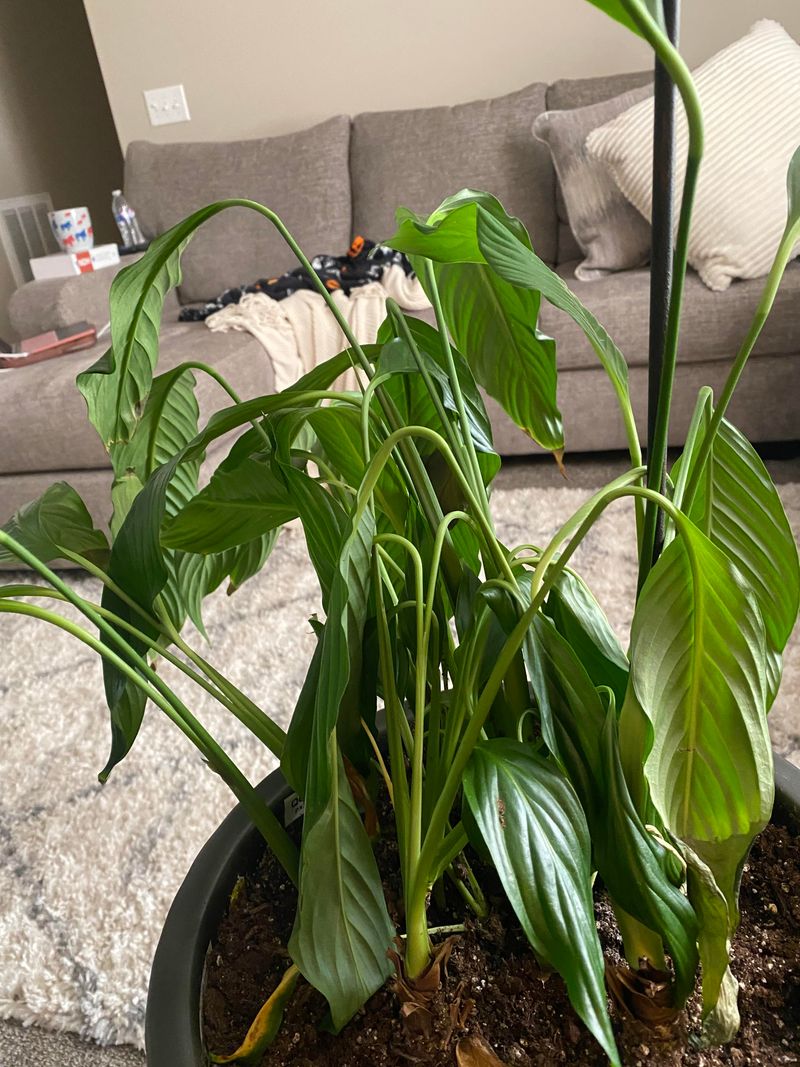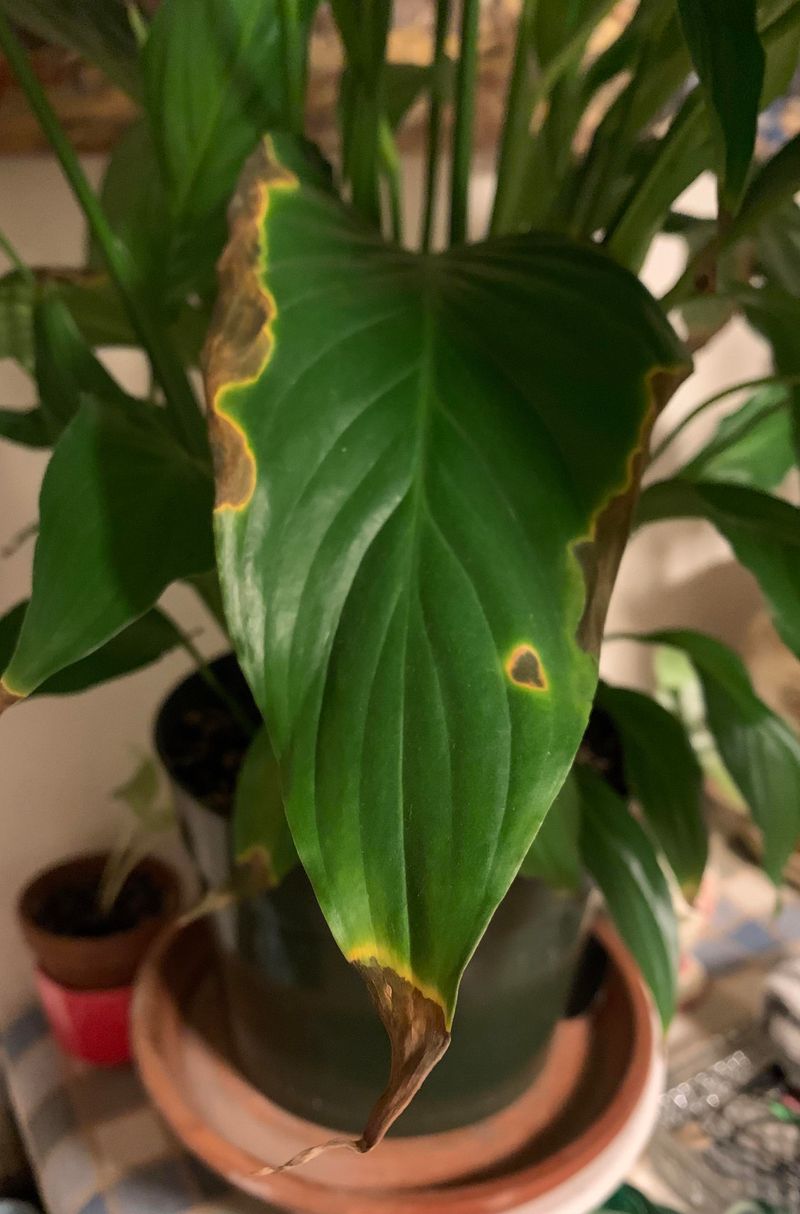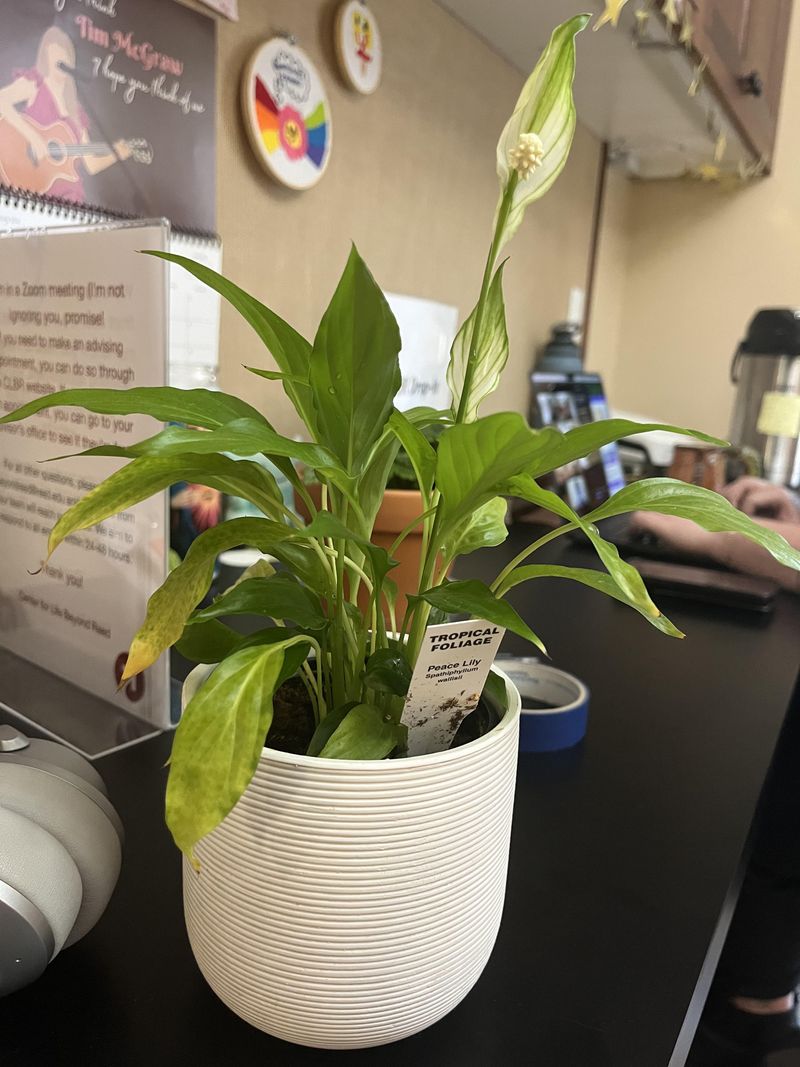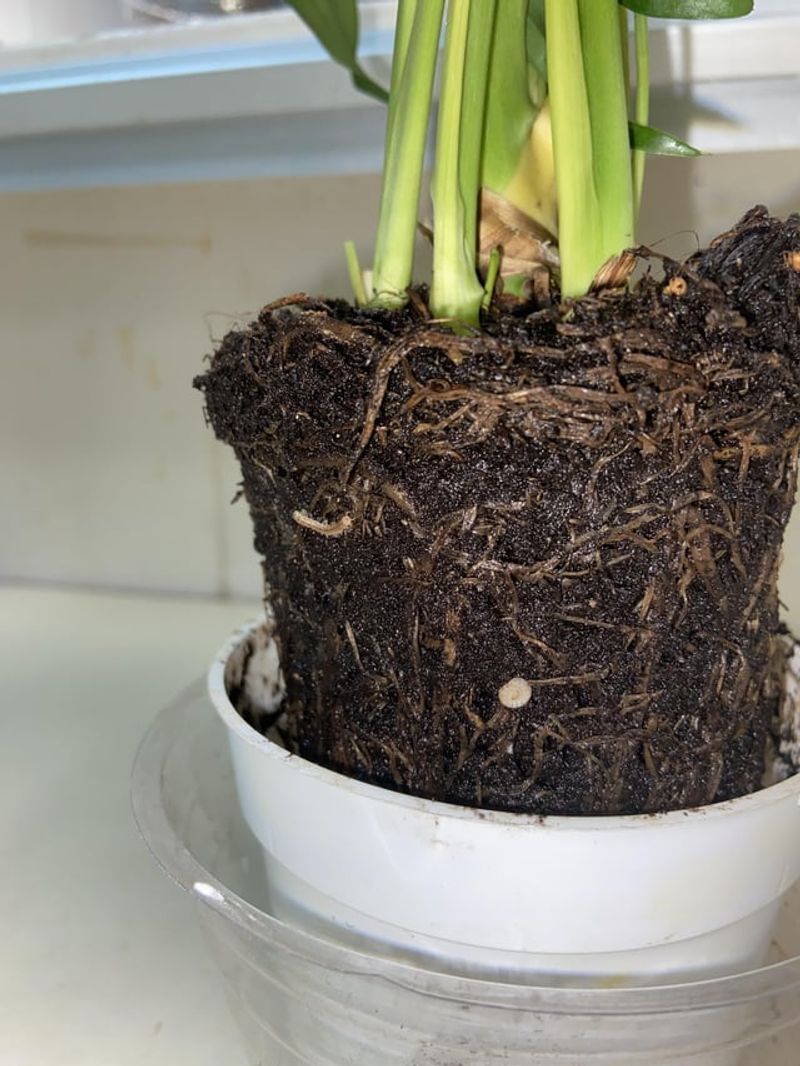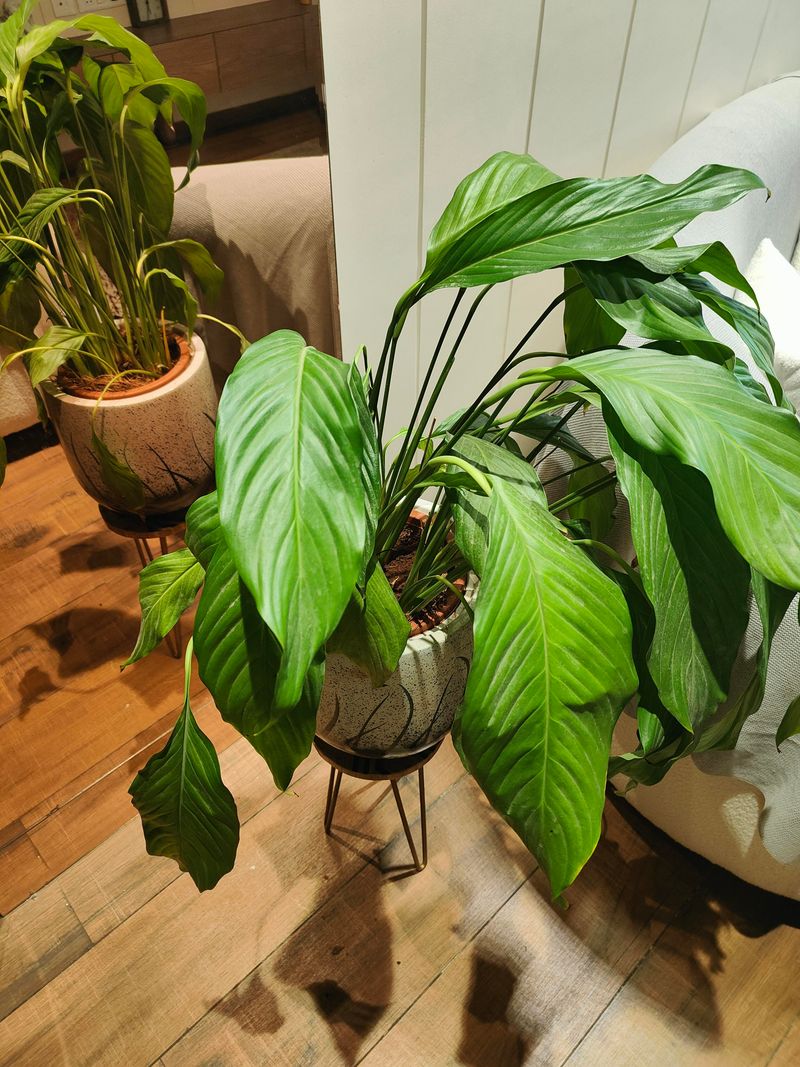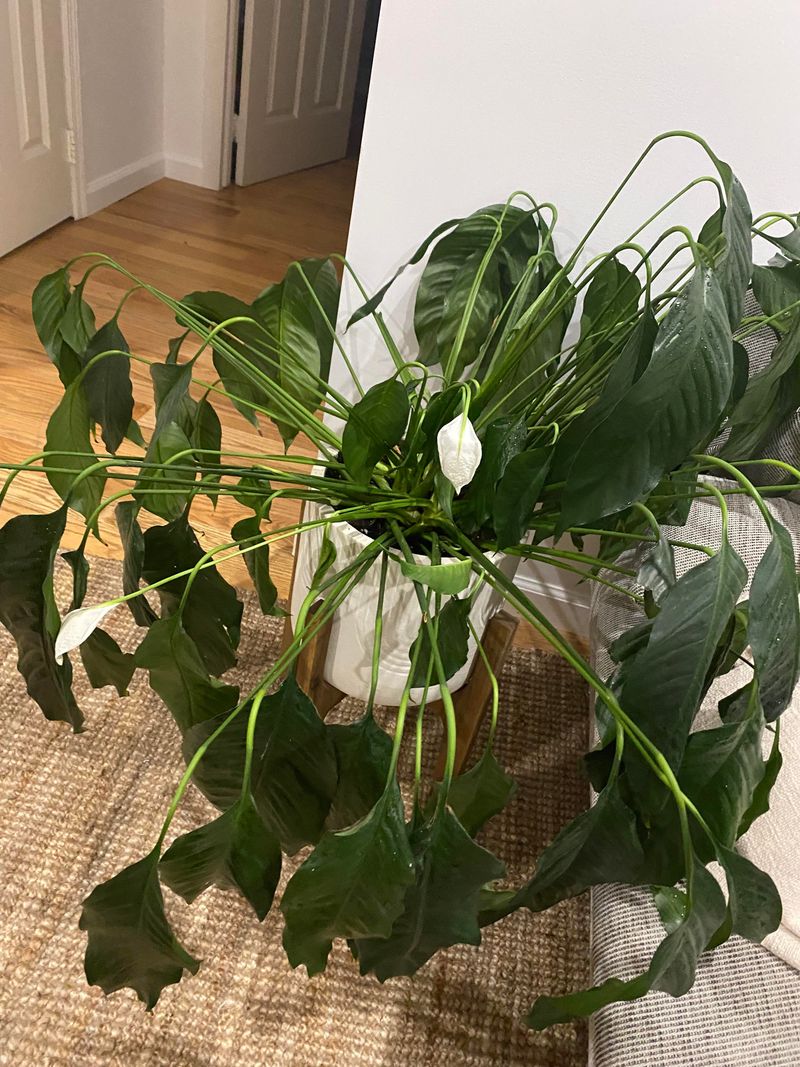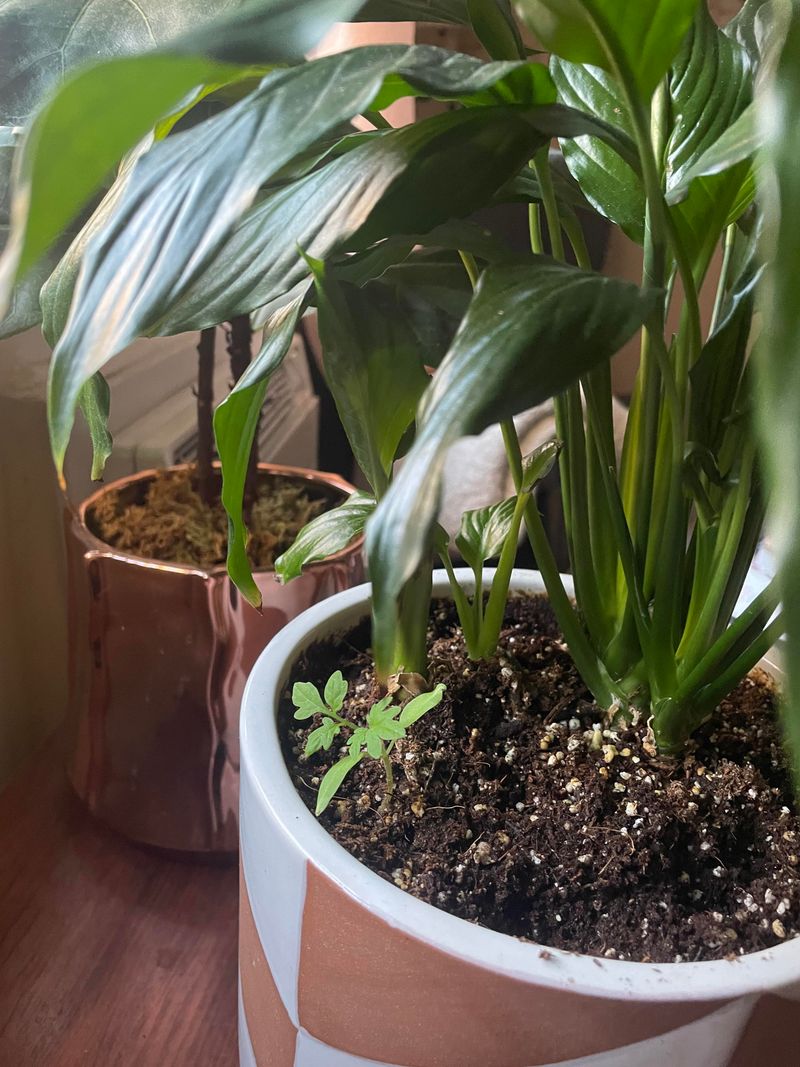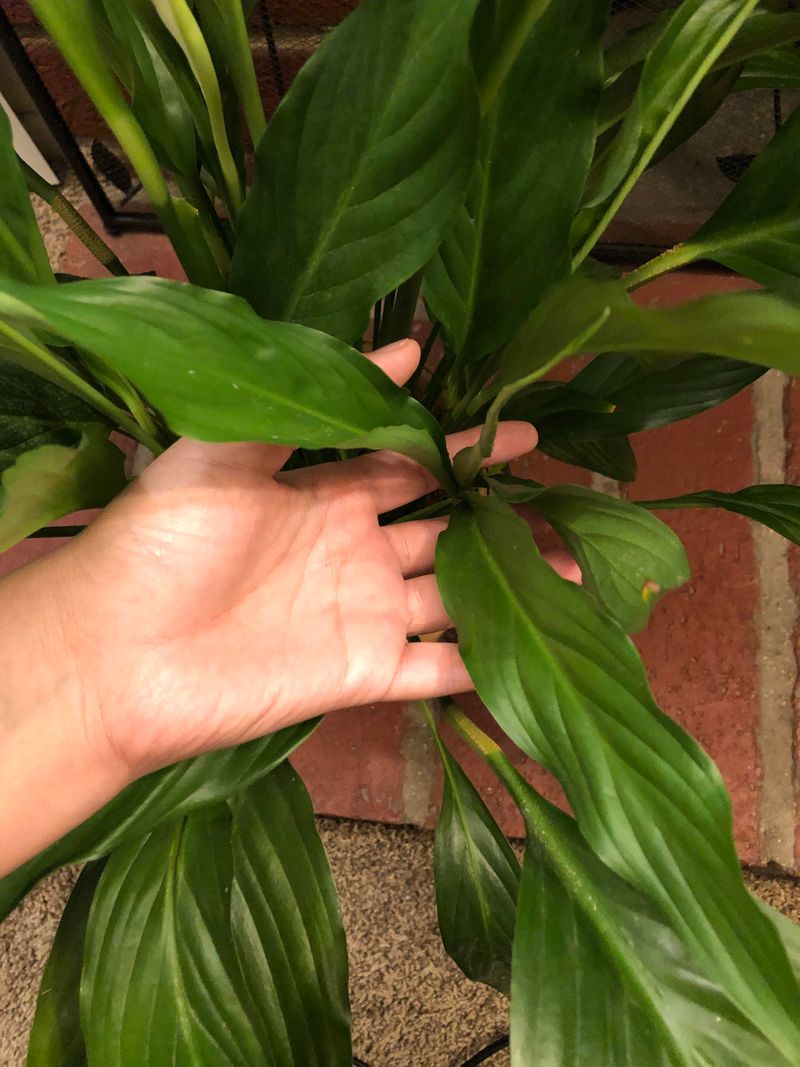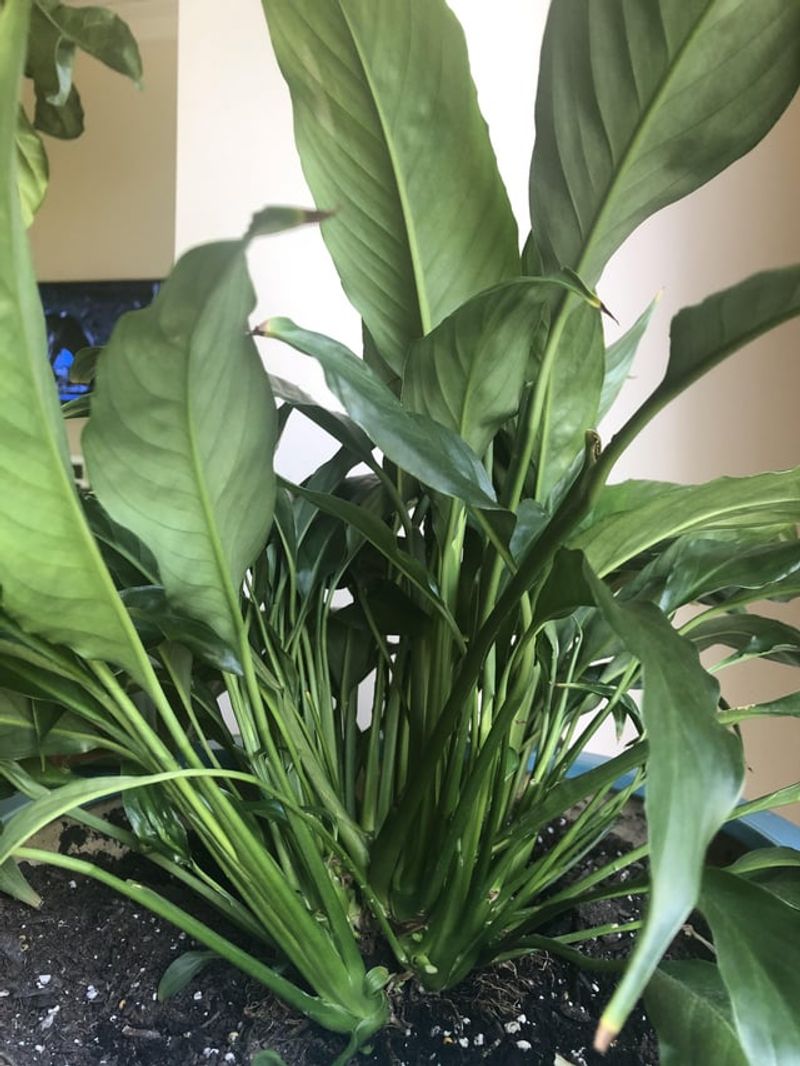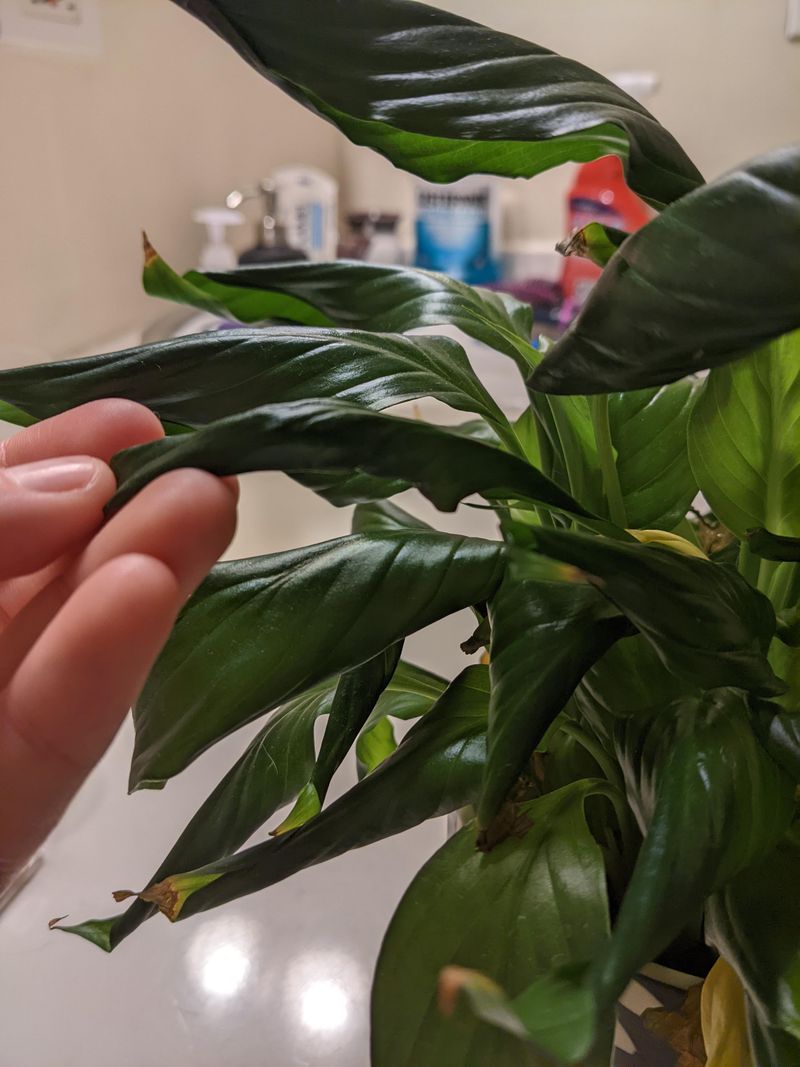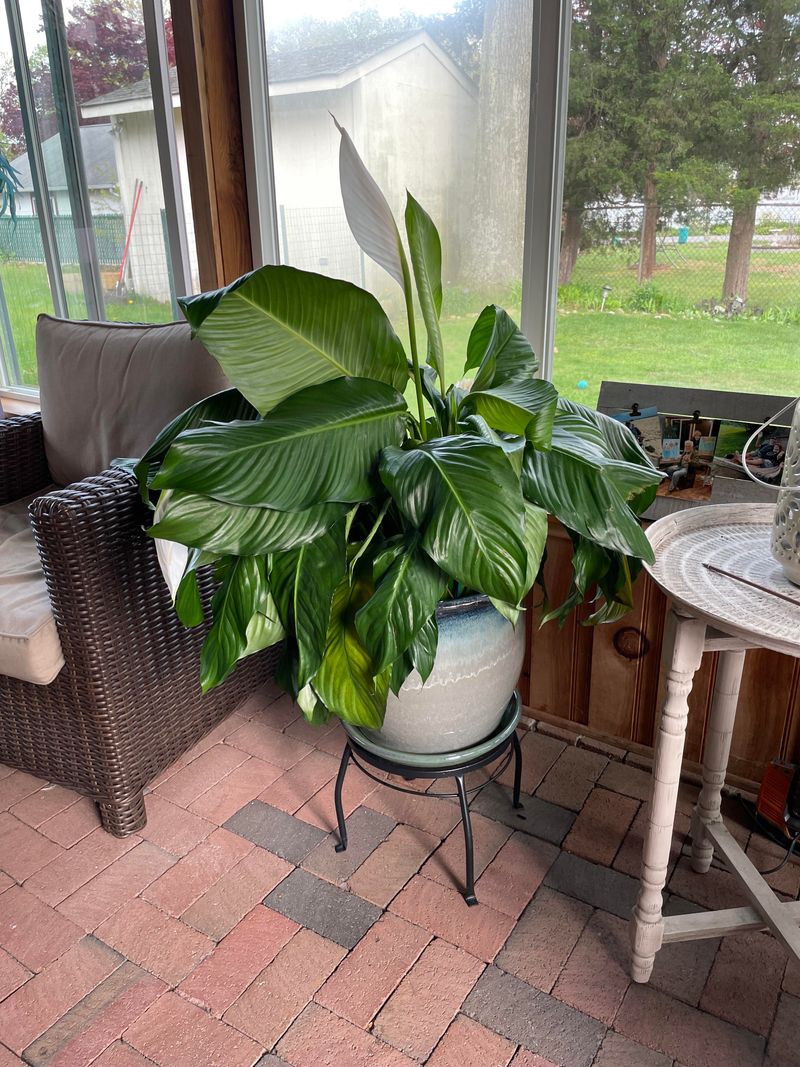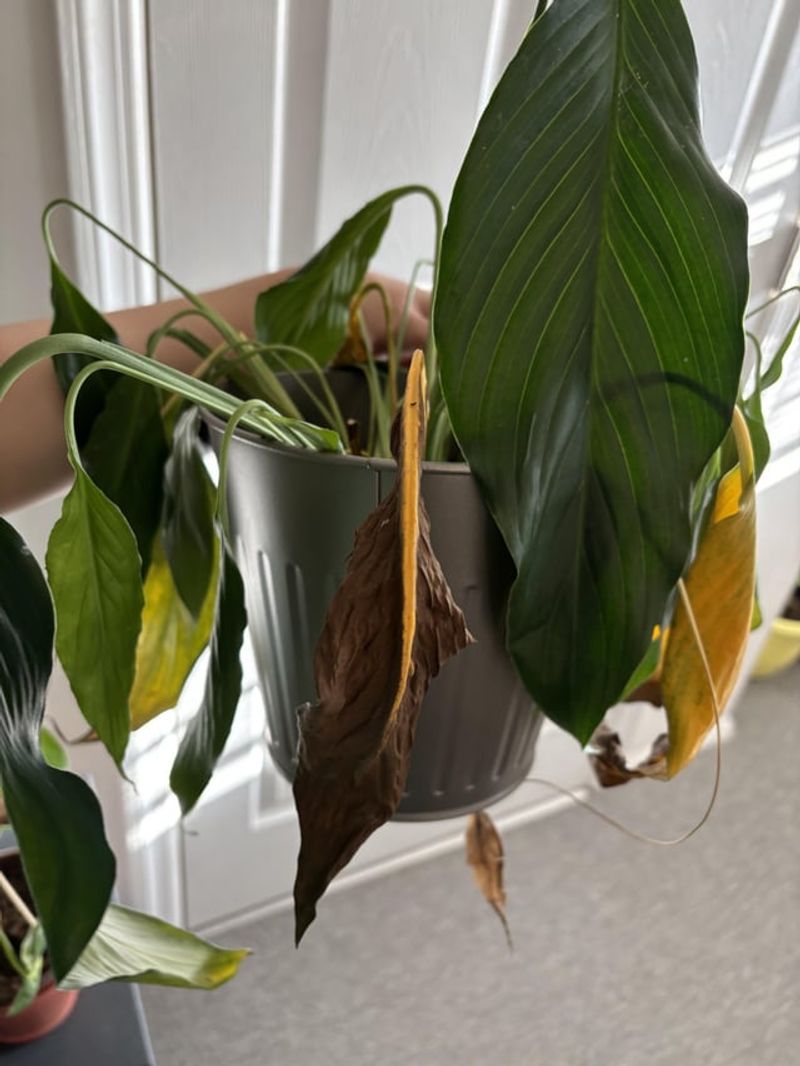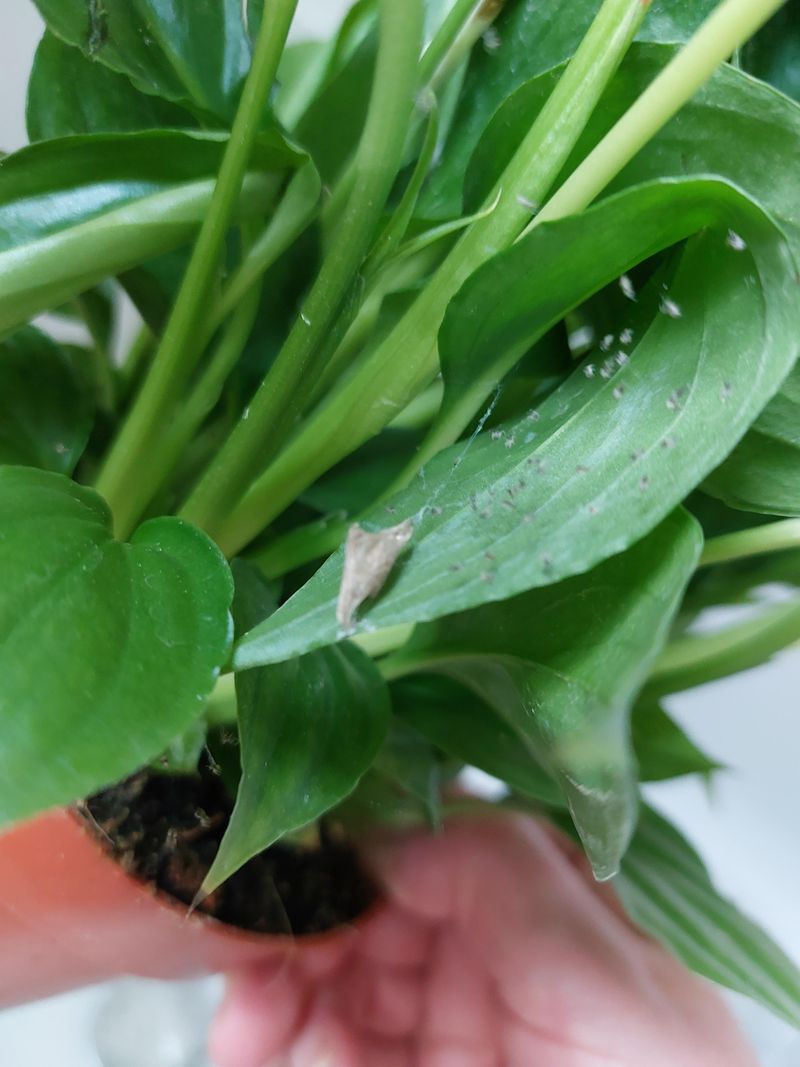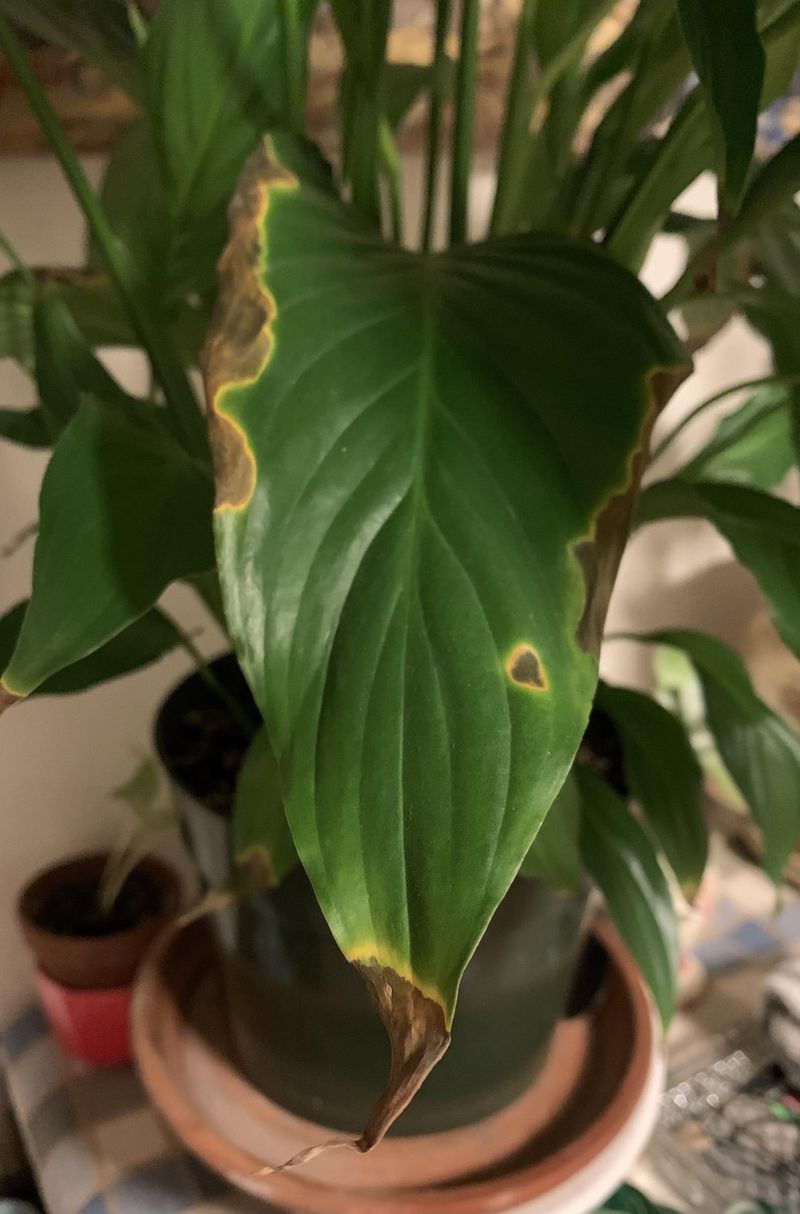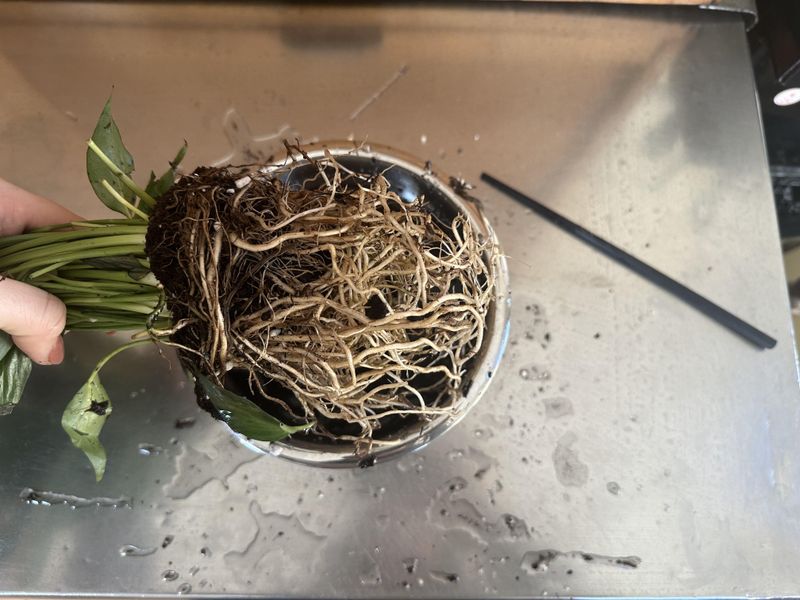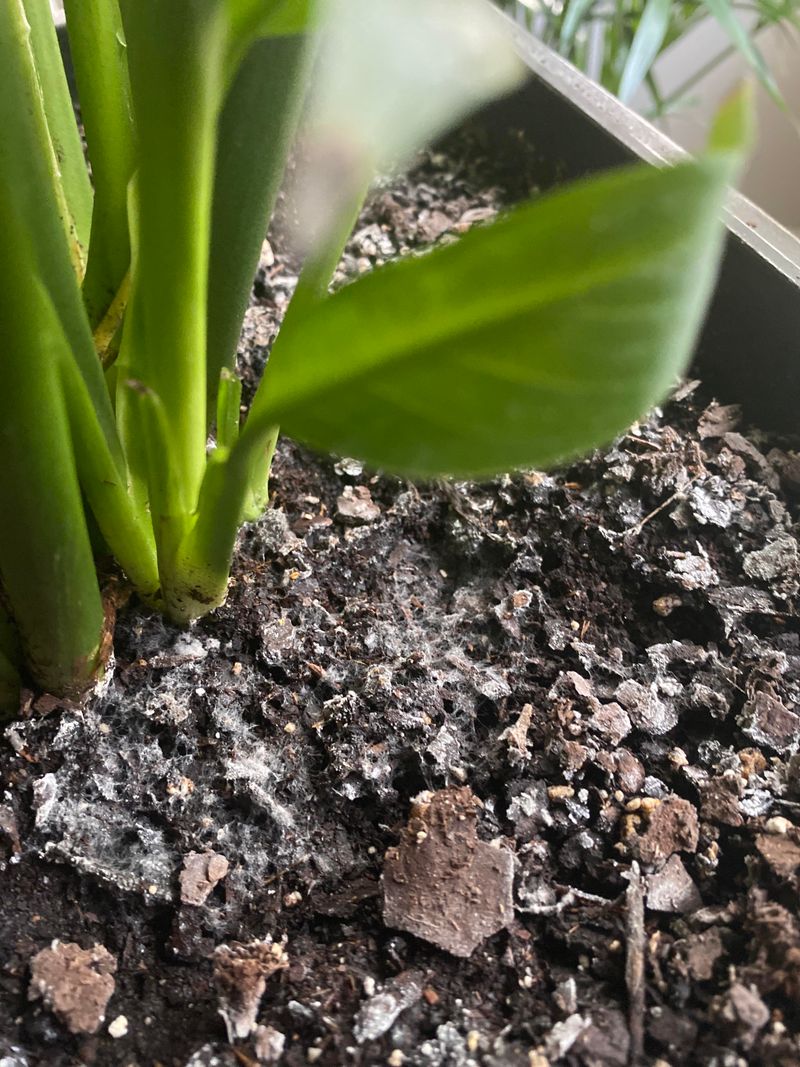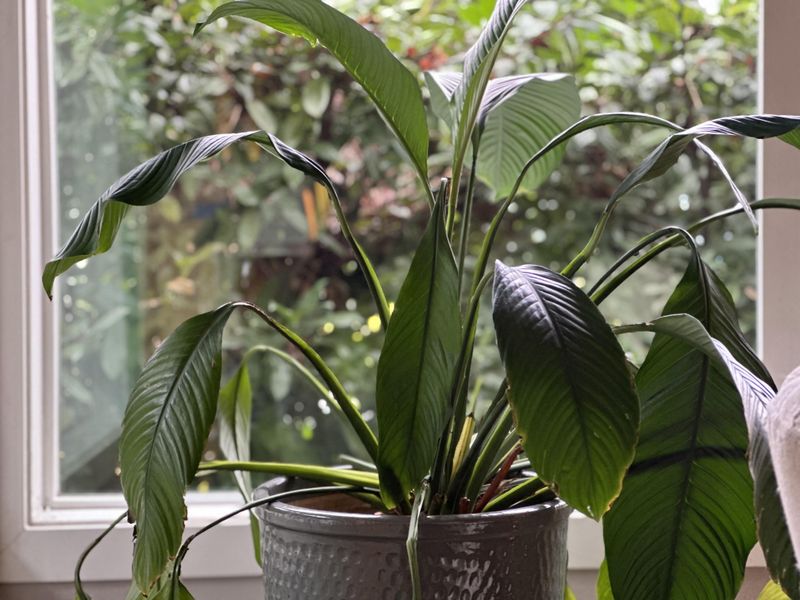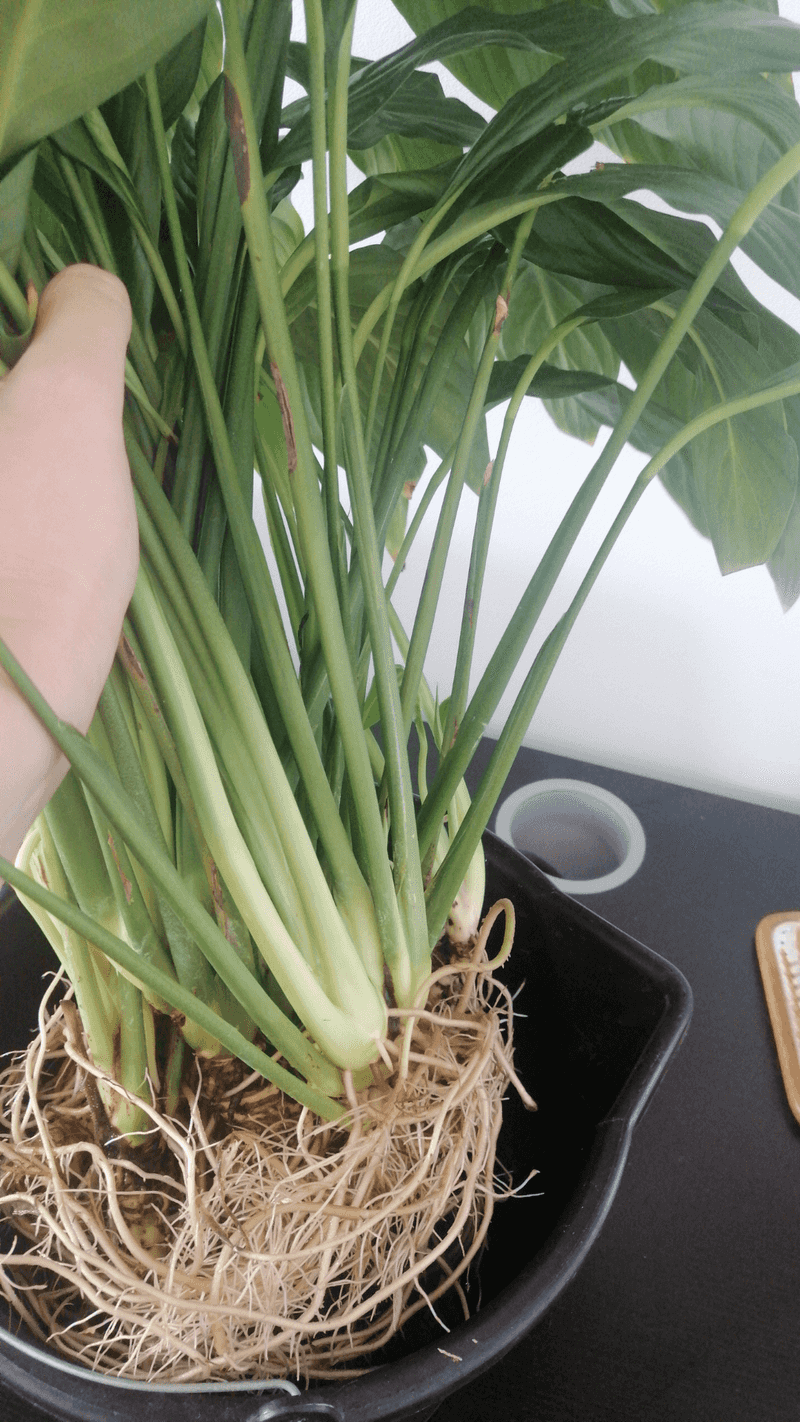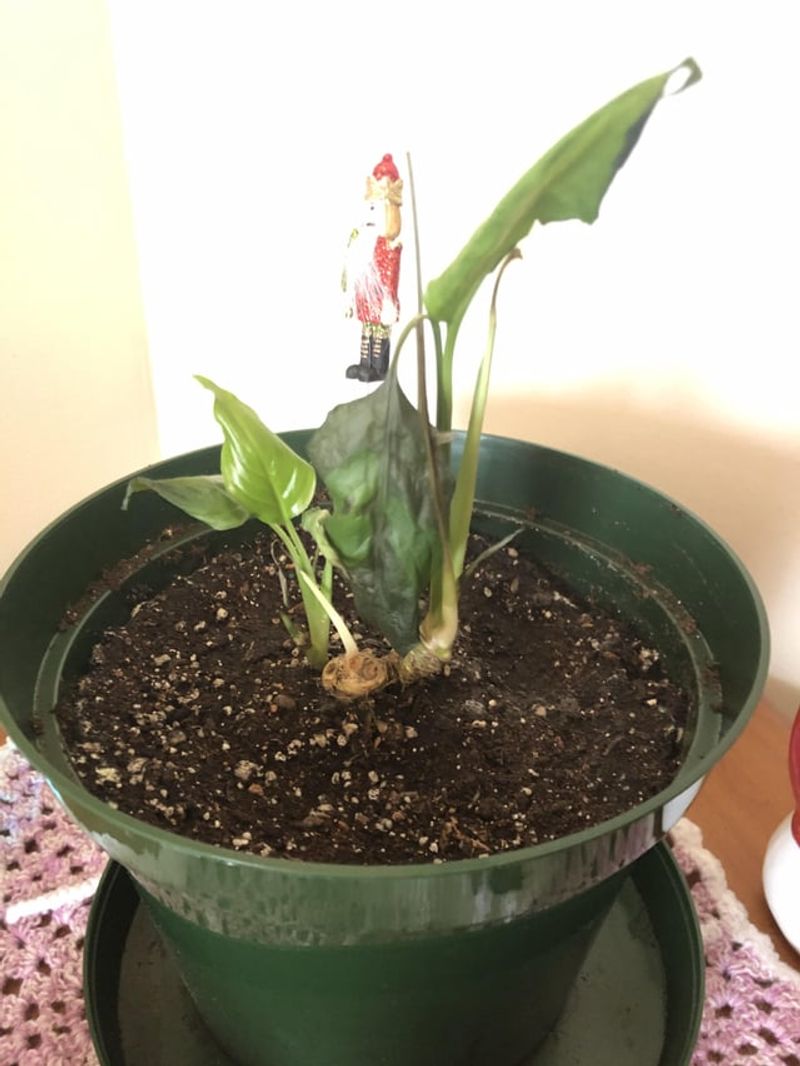Peace lilies might be easygoing, but they’ll definitely let you know when it’s time for a new pot! From droopy leaves to roots peeking out of the soil, there are plenty of signs that your plant needs more space.
I’ve rounded up 20 clues that your peace lily is ready for a fresh start, along with simple steps to help it settle into a new home. A little extra room and fresh soil can do wonders for its growth and overall health.
Let’s make sure your peace lily stays happy and thriving!
1. The Roots Are Growing Out of the Drainage Holes
If your peace lily’s roots are sneaking out of the drainage holes like little escape artists, it’s a clear sign it’s feeling cramped. This means the roots have outgrown their current home and are desperately searching for more space.
If left unchecked, they’ll start circling the bottom of the pot, choking themselves in the process. Repotting into a larger container gives them the freedom they need to stretch out and thrive. Trust me, no one likes feeling trapped—including your plant!
2. The Plant Is Wilting Even After Watering
You just gave your peace lily a drink, but it still looks sad and droopy? That’s a sign something deeper is wrong—literally. When a plant is root-bound, it can’t take in water properly, no matter how much you give it.
Instead of soaking up moisture, the roots are suffocating in their tiny space. Give your peace lily a bigger pot and fresh soil so it can hydrate the right way.
3. The Leaves Are Turning Yellow
A few yellow leaves now and then aren’t a big deal, but if your peace lily is throwing a full-on yellow tantrum, it might be time to repot. Overcrowded roots struggle to take in nutrients, leading to stressed-out, discolored leaves.
Fresh soil packed with nutrients can make all the difference. Plus, a bigger pot means more room for the roots to absorb everything they need. Say goodbye to sad yellow leaves!
4. The Plant Is Growing Slower Than Usual
Has your peace lily gone from thriving to barely surviving? When a plant outgrows its pot, it stops growing because there’s nowhere left to go. No matter how much light, water, or love you give it, it stays the same size.
A bigger pot gives the roots room to stretch and the plant space to flourish. It’s like moving from a tiny apartment to a spacious new home—suddenly, there’s room to grow!
5. The Soil Dries Out Too Quickly
If your peace lily’s soil goes from damp to bone-dry in record time, it’s probably outgrown its pot. When roots take up most of the space, there’s less room for soil to hold moisture.
That means you’re constantly watering, but your plant is still thirsty. A larger pot with fresh soil will help retain moisture and keep your peace lily happily hydrated. No more constant refills!
6. The Leaves Are Browning at the Edges
Crispy, brown leaf edges aren’t just an aesthetic issue—they’re a distress signal. When a peace lily is root-bound, it struggles to take in enough water and nutrients, leaving its leaves dry and damaged.
Repotting with fresh, nutrient-rich soil can bring it back to life. Think of it as a spa day for your plant! A little extra care now will keep those leaves lush and healthy.
7. The Plant Looks Unbalanced or Top-Heavy
Is your peace lily looking like it might topple over at any moment? A top-heavy plant usually means the roots can’t keep up with the growth above.
If the base seems too small compared to the rest of the plant, it’s definitely time for an upgrade. A larger pot will provide stability and support for future growth. No more leaning tower of peace lily!
8. You See More Roots Than Soil
When you go to water your plant and see a tangled mess of roots instead of soil, it’s time to repot. This happens when the roots take over, leaving barely any space for the actual soil.
Without enough soil, your plant can’t get the nutrients it needs. Moving to a bigger pot gives your peace lily a fresh start. More soil, more nutrients, more happy plant vibes!
9. Water Sits on Top of the Soil Without Absorbing
If water just pools on top of the soil and takes forever to sink in, your plant might be root-bound. Overcrowded roots leave little room for soil, making water absorption difficult. Instead of nourishing your plant, the water just sits there or runs off the sides.
Repotting with fresh, airy soil will fix the problem. Your plant deserves a proper drink!
10. The Pot Feels Too Light, Even After Watering
Does your peace lily’s pot feel weirdly light, even after you just watered it? That could mean there’s more root than soil inside.
Since the soil is what holds moisture, a lack of it causes water to drain too fast. A larger pot with fresh soil will keep things balanced and hydrated. No more weirdly light pots!
11. The Leaves Are Drooping Constantly
Droopy leaves are normal right before watering, but if your peace lily always looks exhausted, that’s a red flag. When roots don’t have enough space, they struggle to deliver water and nutrients efficiently.
This leaves your plant in a constant state of thirst, even if you’re watering regularly. A bigger pot lets the roots do their job properly. No more tired, sad leaves!
12. The Plant Keeps Falling Over
If your peace lily is constantly tipping over, it’s probably because it’s outgrown its pot. When the root system gets too big, it can’t anchor the plant properly.
A wobbly plant is an unhappy plant! Repotting into a larger container will provide the stability it needs. No more unexpected plant tumbles!
13. The Soil Has Become Hard and Compact
Does your peace lily’s soil feel rock-hard when you touch it? Over time, compacted soil makes it difficult for roots to breathe and absorb nutrients.
This can slow growth and weaken your plant. Fresh, well-aerated soil in a bigger pot will help. Think of it as giving your peace lily fresh new bedding—so much more comfortable!
14. New Leaves Are Smaller Than Usual
If new leaves are coming in tiny and sad-looking, it’s a sign your plant isn’t getting enough nutrients. When roots are too crowded, they struggle to take in what they need.
Repotting with nutrient-rich soil will encourage healthy, full-sized leaves. Your peace lily deserves to grow to its full potential!
15. The Plant Has Stopped Blooming
Peace lilies are known for their beautiful white flowers, but if yours has stopped blooming altogether, it might be time to repot. A root-bound plant focuses on survival, not flowering.
Fresh soil and more space will encourage it to bloom again. Give it a new home, and you might just see those gorgeous flowers return!
16. The Plant Needs Frequent Fertilizing
If your peace lily is always hungry for fertilizer, it might be because the soil is depleted. Over time, roots suck up all the nutrients, leaving the soil dry and lifeless. You could keep dumping in fertilizer, but that’s like trying to survive on energy drinks instead of a real meal.
A fresh pot with new, nutrient-rich soil will do wonders. Your plant needs a full-course meal, not just quick fixes!
17. The Leaves Are Curling
When your peace lily’s leaves start curling up like they’re trying to escape, it’s a sign of stress. Cramped roots can’t deliver water properly, leaving the leaves desperate for hydration.
Instead of staying smooth and lush, they curl in protest. A bigger pot with fresh soil will help them relax and spread out again. Think of it as giving your plant a much-needed stretch!
18. The Soil Stays Wet for Too Long
If your peace lily’s soil stays soggy for days, your plant might be struggling to absorb water. Root-bound plants can’t take in moisture properly, leaving water sitting there like an uninvited guest.
This can lead to root rot, which is as nasty as it sounds. A new, well-draining pot will solve the problem. No more soggy soil, no more stressed-out roots!
19. You Haven’t Repotted in Years
Be honest—when was the last time you repotted your peace lily? If you can’t remember, it’s probably overdue for an upgrade. Over time, soil breaks down, roots get tangled, and the plant stops thriving.
Repotting every couple of years keeps your peace lily happy and growing strong. It’s like a fresh start for your plant!
20. The Plant Looks Stressed After Watering
If watering your peace lily seems to stress it out instead of helping, that’s a big red flag. Root-bound plants can’t properly absorb water, so they stay dehydrated no matter what.
Instead of perking up, the leaves may droop even more. A bigger pot will give the roots the space they need to drink up properly. No more post-watering meltdowns!
21. Pests Keep Showing Up
Have you noticed tiny bugs making themselves at home in your peace lily’s soil? Old, compacted soil is a prime spot for pests to thrive.
Fungus gnats, anyone? Repotting with fresh soil can help kick those uninvited guests to the curb. A clean start means fewer creepy crawlers lurking in your plant!
22. The Leaves Have Brown Spots
If your peace lily is sporting mysterious brown spots, poor root health could be the culprit. When roots are too crowded, they struggle to absorb nutrients, leading to stressed-out leaves.
Brown spots are basically your plant’s way of crying out for help. A new, spacious pot with nutrient-rich soil will bring those leaves back to life. No more sad brown patches!
23. The Roots Are Tangled and Circling the Pot
Have you ever taken your peace lily out of its pot and seen roots wrapped around themselves like a messy ball of yarn? That’s called being root-bound, and it’s bad news.
Tangled roots can strangle themselves, cutting off their own access to nutrients. A bigger pot gives them room to spread out and function properly. No more root prison!
24. The Soil Has a White, Crusty Layer on Top
Ever noticed a weird white crust forming on your peace lily’s soil? That’s usually a buildup of minerals, salts, and fertilizer—another sign the soil is exhausted.
Too much buildup can make it harder for the plant to absorb water and nutrients. Fresh soil in a new pot will reset everything. It’s like hitting the refresh button for your peace lily!
25. The Plant Is Leaning to One Side
If your peace lily is constantly leaning like it’s had one too many drinks, the roots might be out of balance. Overcrowded roots can make the plant unstable, causing it to tilt instead of standing tall.
A bigger pot will anchor it properly, giving it the support it needs. Time to straighten up and grow right!
26. The Plant Has More Roots Than Soil
If you repot your peace lily and notice it’s more root than soil, that’s a problem. When roots take over, there’s no room left for soil to hold moisture and nutrients.
Your plant is basically surviving on fumes at that point. A larger pot with fresh soil gives it the environment it needs to truly thrive. Don’t let your plant run on empty!
27. The Soil Smells Bad
If your peace lily’s soil smells like a swamp or something worse, trouble is brewing. Soggy, compacted soil can lead to bacterial growth and root rot, which gives off that awful smell. If you don’t act fast, your plant’s roots could be in serious danger.
Repotting with fresh, well-draining soil will eliminate the stink and refresh your plant’s environment. No more bad smells—just a fresh, happy peace lily!
28. The Pot’s Drainage Isn’t Working Properly
If your peace lily’s water just sits there instead of draining, that’s a recipe for disaster. Overcrowded roots can block the drainage holes, turning your pot into a swamp.
That means too much moisture, which can lead to root rot. A bigger pot with better drainage will fix the issue instantly. Your peace lily deserves a dry, comfy home!

